I'm inspired by the best video games of the 80s
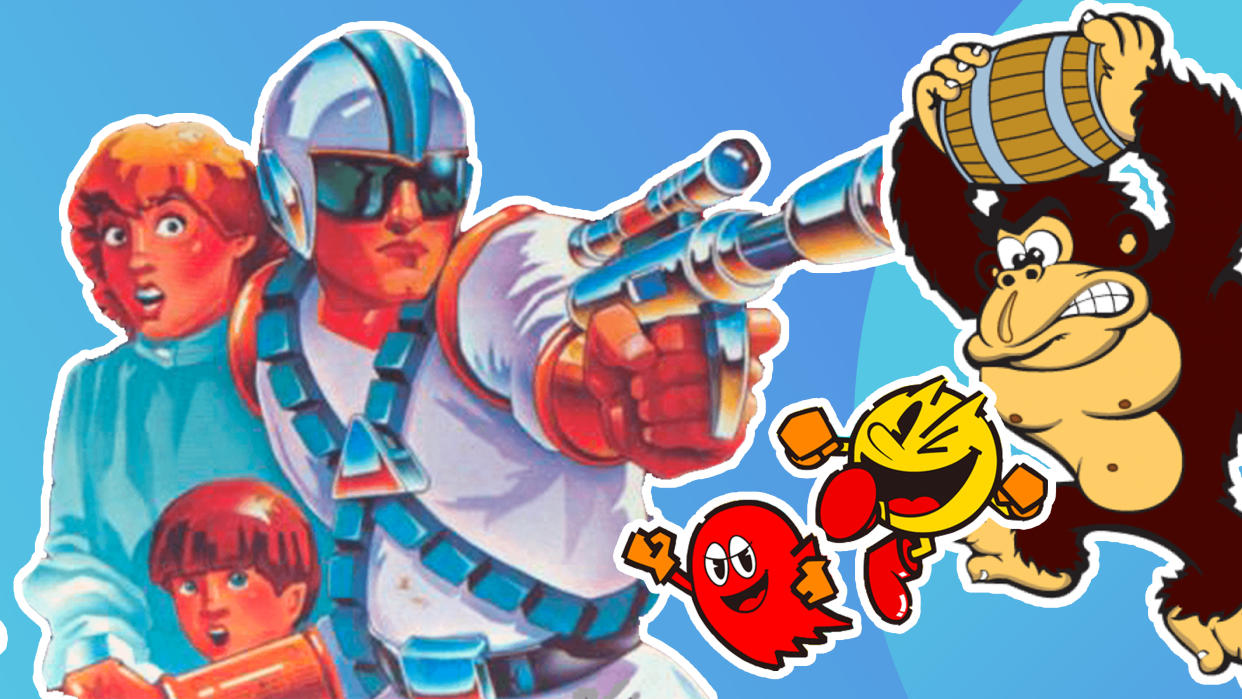
When looking back at the best video games of the 80s it's hard to pin down a definitive list of the key titles that changed how games were made. The list below is personal to me, judged on how they changed game design, art direction and the tech used to create them. These were games often made against a background of no common programming language and where character design relied on pixels and well-placed blocks – yet they still set the pace for future game development.
The 80s was the decade when the most exciting and important developments took place in gaming, driven by new tech and innovative software. You can play many of these games on one of the best retro mini consoles, and as a specialist in retro gaming I've played them all over the years. Don't forget, Nintendo Switch has become one of the best ways to play the best retro games too, read our Nintendo Switch vs Nintendo Switch OLED feature for more details.
I've selected ten titles (from a potential list of hundreds) that helped shape the gaming landscape of the 80s through advances in art and design. This list is presented in chronological order because, seriously, it would be impossible to rank these works. I also apologise now for no Maniac Mansion, Missile Command or Skool Daze (that name!), but maybe next time.
Video games of the 80s that changed design
I hope you enjoy my list below, I've spent my life playing these and more and regularly write about my experiences and insights in Retro Gamer magazine. Read on, as these are the games I rate as the best of the 80s that changed how game art and design was seen for decades to come.
01. Adventure
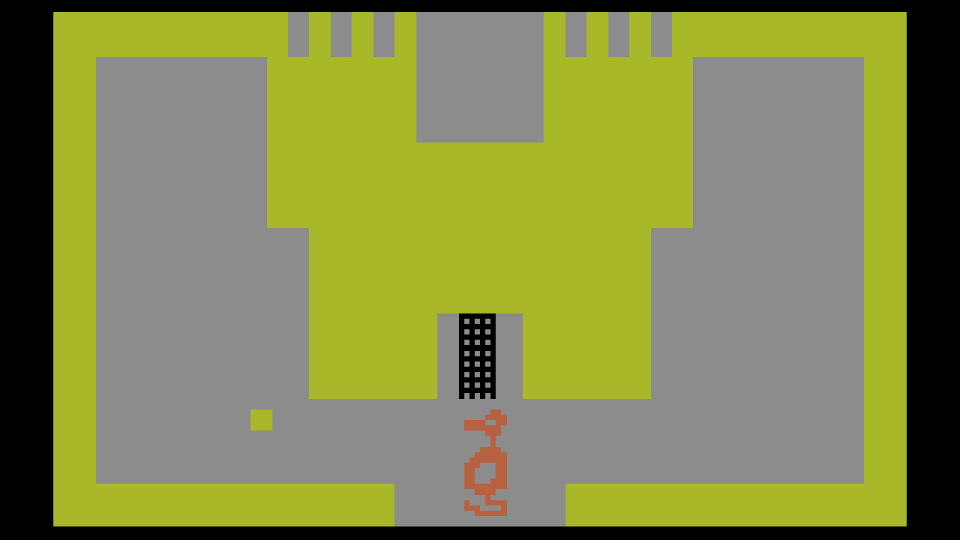
Released: 1980 Format: Atari 2600
I’m obviously not championing this entry for its art – your avatar is a small yellow block and the dragons that roam around look like giant ducks. But beneath the surface lies one of the earliest arcade adventures which grew from the idea of visualising Crowther and Woods’ Colossal Cave Adventure and its twisty little mazes. Crucially, the action continues off-screen which helps build a believable world. And all this inside a 4Kb cartridge. Unbelievable. Author Warren Robinett even found space to sneak in a secret room displaying his name, resulting in one of the very first video game Easter eggs.
Play it now: The excellent Atari 50 Anniversary Collection, released in November 2022.
02. Pac-Man
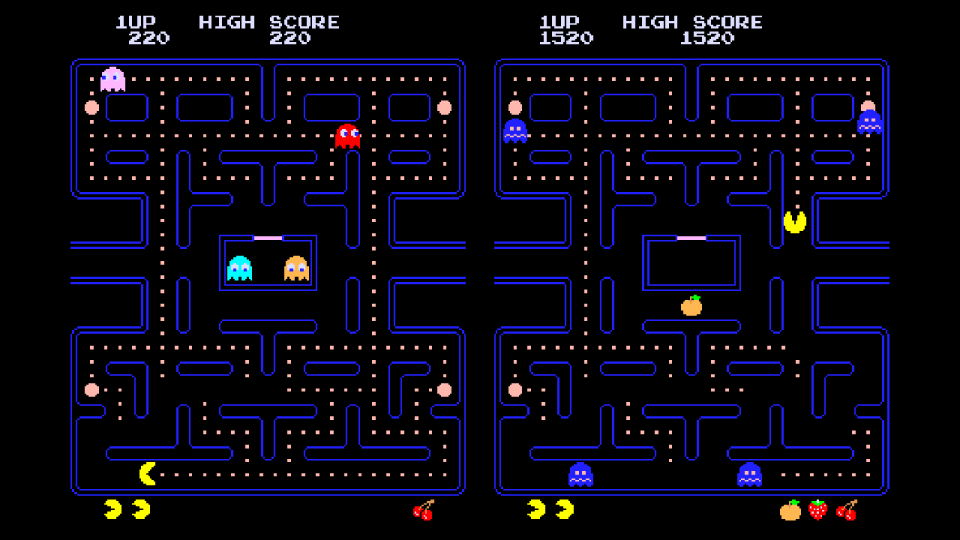
Released: 1980 Format: Arcade
When the arcade industry was busy eating itself at the start of the 1980s, churning out clones of Breakout and Space Invaders, Namco’s Toru Iwatani created a game with real character – namely Pac-Man, the first real ‘star’ of gaming, ably supported by the four named ghosts who chase our hero around the maze (and damn me if Clyde and co aren’t trailblazing some rudimentary AI).
Just like that clever pursing AI, Pac-Man introduced a series of firsts and the character’s yellow mug quickly became synonymous with gaming (it ranks No.1 in our list of the best video game logos of all time). Such was the craze he even inspired a hit pop song in 1982. Pac-Man Fever indeed.
Play it now: Available in the Namco Museum Arcade Pac for Nintendo Switch.
03. Donkey Kong
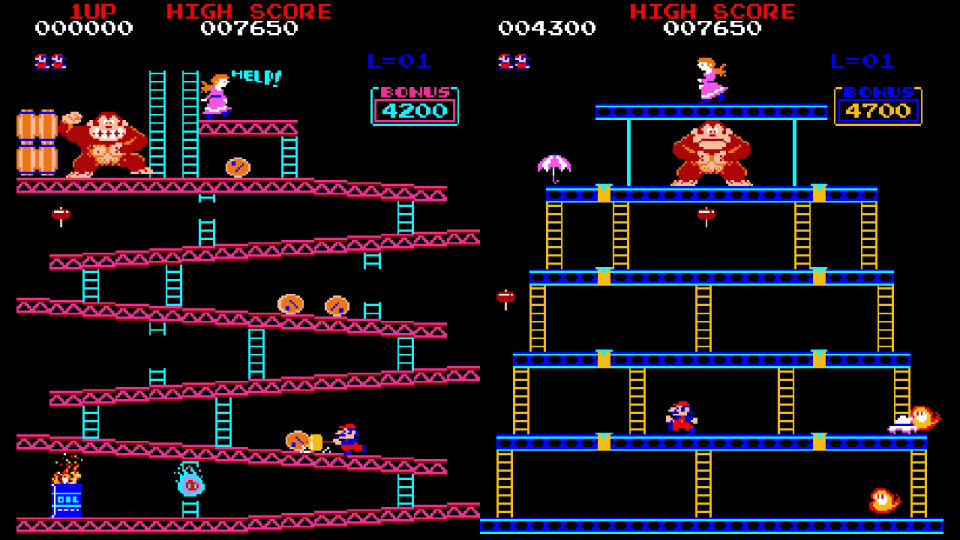
Released: 1981 Format: Arcade
Gather around and witness the birth of Mario and Donkey Kong, as well as Nintendo as an unstoppable gaming heavyweight. (Read our feature on the Nintendo logo history.) Riffing on Pac-Man, Shigeru Miyamoto’s game melds memorable characters with a hefty arcade challenge which helped establish the platforming genre.
Like Pac-Man, Donkey Kong has become a high-scoring mainstay where fully-grown adults dedicate their lives to becoming 0.01% better than their rivals. Visually, Donkey Kong is a poster child for the arcade era, with the opening ‘barrels’ stage and its sloped girders becoming a quintessential video game image.
Play it now: Available for the Nintendo Switch and its eStore.
04. Robotron 2084

Released: 1982 Format: Arcade
For me this Eugene Jarvis creation is the definitive single-screen shooter, elevated to extraordinary heights thanks to its then-unique twin-stick controls: left-hand to move, right-hand to shoot, in perfect harmony, pushing your cognitive skills to their limits.
Unlike a lot of games of the era, it’s frantic but never feels unfair, and the gameplay is beautifully balanced. It's also one of the first examples of risk and reward game design – save the humans or kill the aliens to save yourself. Truly elegant in its simplicity with layers of depths, Robotron regularly appears on developers' favourite game lists.
Play it now: Available in the Midway Arcade Origins for Xbox 360, playable on Xbox Series S/X.
05. Star Wars
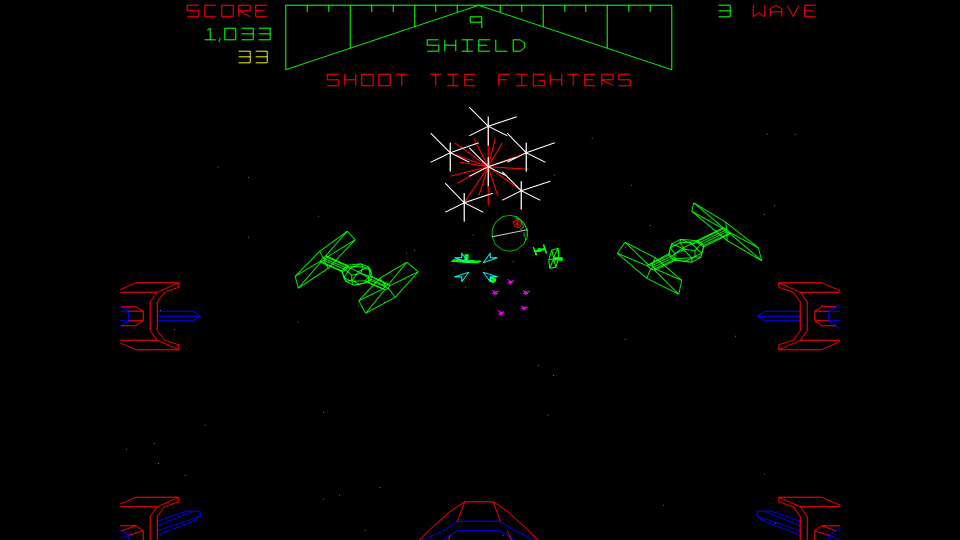
Released: 1983 Format: Arcade
Vector games like Asteroids really popped in the arcades. Colour vector games such as Battlezone and Tempest took the tech further. Atari’s Star Wars married colour vectors with the biggest movie franchise around and the result was a game that used a license to enhance the gameplay rather than just hang off it.
Those aren’t random spaceships you’re shooting, they’re TIE fighters. That’s no moon, that’s the bloody Death Star. Add in the score and speech from the film, plus a yoke-style flight controller and you have a coin-op that’s now a grail for arcade game hunters. It's testament to the strength of the film's design that a few vector lines can evoke immediate recognition, and even an emotional response.
Play it now: The replica Star Wars cabinet by Arcade1Up.
06. Elite
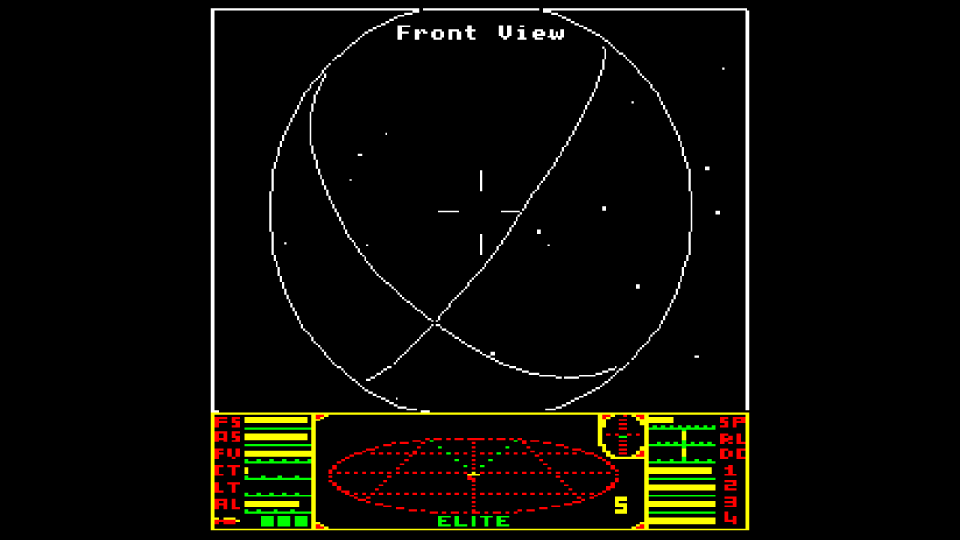
Released: 1984 Format: BBC Micro
So far this list has been dominated by arcade games, as that’s where the momentum was in the early 80s. But now let’s head home and talk about Elite, a space sim that was designed to run on the BBC Micro, a home computer with just 32Kb of memory.
Within this meagre space, David Braben and Ian Bell utilised wireframe graphics and procedural generation to create a whole galaxy for players to explore and immerse themselves in. With no defined ending, beyond the challenge to achieve ‘elite’ status, this is the most important and influential open-world adventure ever.
Play it now: You can download Elite from the Frontier website for free.
07. Super Mario Bros.
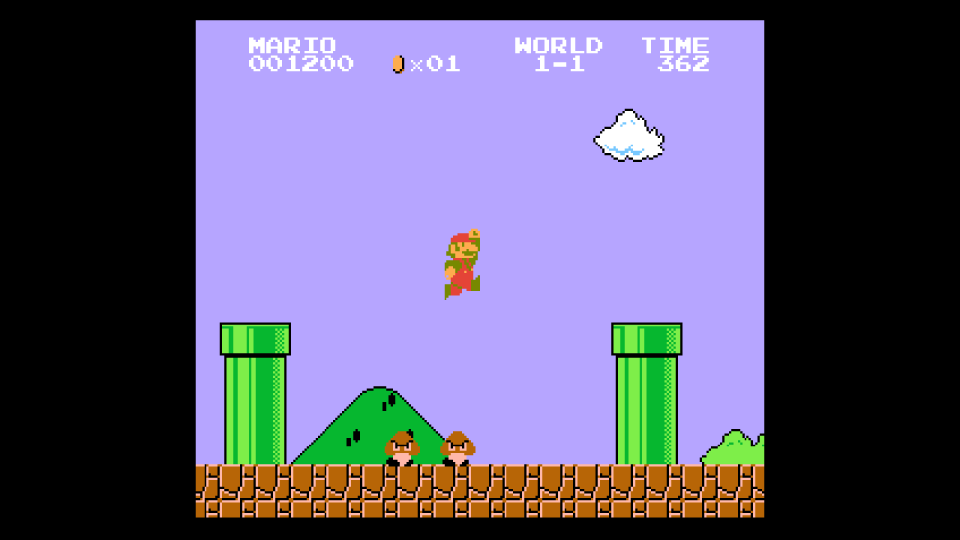
Released: 1985 Format: NES
If you had to pinpoint the moment when Mario evolved from everyday hero to worldwide megastar then here it id with Super Mario Bros. the character's first side-scrolling arcade game. Outside of the Mario series, so many tropes of the platform genre can be traced back here that it would be impractical to list them all.
Safe to say, Super Mario Bros. set the standard that all subsequent platform games aspired to achieve. It’s possible to complete it in just over five minutes, but memories of Mario’s first foray into the Mushroom Kingdom last a lifetime. (Read our feature on Mario's design secrets to learn more about this iconic character.)
Play it now: On Nintendo Switch as part of the NES library (you need an online paid membership).
08. OutRun
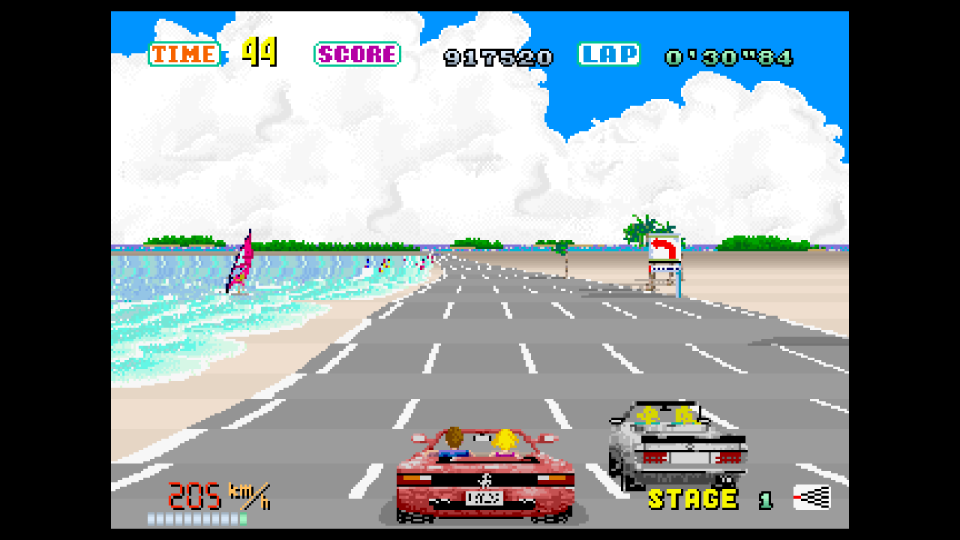
Released: 1986 Format: Arcade
Namco’s Pole Position popularised the pseudo-3D, pixel-art, chase-view racing game, but it was Sega’s gorgeous blue sky racer that we all wanted to play. In many ways OutRun was peak 80s, with the red Ferrari and the blonde passenger and the branching roads which instilled a sense of freedom, suggesting that you could go anywhere, do anything.
Yet technically it was so ahead of its time that Sega’s competitors simply couldn’t keep up. It still looks lovely today (read our guides to how to break into pixel art and pixel art Photoshop skills to learn this for yourself). OutRun sounds amazing too. Is there a better tune to accompany a beautiful journey than Magical Sound Shower?
Play it now: The Sega Ages version is available on Nintendo Switch eShop.
09. Populous

Released: 1989 Format: Amiga
In the beginning there was Populous, courtesy of Peter Molyneux and Bullfrog. Okay, so this wasn’t the first ‘god game’, but it’s the one that I feel established the blueprint that others copied.
Despite the huge number of levels (500), and the icon-heavy interface, at its heart Populous is a rather simple game in which you can flatten lands and part seas with the click of a mouse. The crisp isometric visuals are iconic too – you may recall that Royal Mail immortalised the game as part of a retro stamp collection.
Play it now: Buy it at GOG.com for less than $5 / £5.
10. Tetris
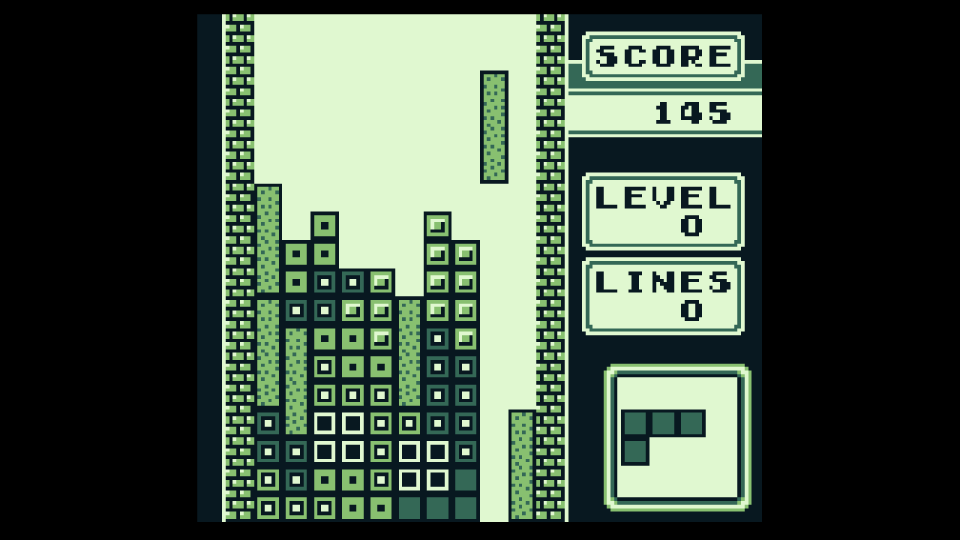
Released: 1989 Format: Game Boy
Alexey Pajitnov’s perennial puzzler has appeared on every system under the sun, but I have to single out the Game Boy version for inclusion here. Nintendo’s idea to bundle it with the fledgling handheld was a masterstroke as it was the perfect pack-in, the ultimate game on the go. Bullet Proof Software’s conversion avoids gimmicks and presents a flawless take on the classic concept that hasn’t really been bettered. All told more than 35 million Tetris carts were shipped, spreading falling block fever dreams the world over.
Play it now: On Nintendo Switch, as part of its Game Boy library.
How can I play retro games today?
The easiest way to play retro games today would be on a games console, either via a remasters collection, such as the excellent Teenage Mutant Ninja Turtles Cowabunga Collection or the SNK 40th Anniversary Collection. If you sign-up to Nintendo's online membership you can play classic games from the NES, SNES, GameCube and N64 for free.
Are retro mini consoles good?
Yes, if you love retro games and want to play some of the best emulated games from the 70s, 80s, and 90s then a retro mini console is worthwhile. You can read my Sega Mega Drive Mini 2 review and Amiga A500 Mini review for two good examples.
What video game design dominated the 1980s?
In the early 1980s it was Atari's Space Invaders but this was soon overshadowed by Pac-Man, which was released on almost every screen you can imagine. The term 'Pac-Mania' was coined for a reason. Other trends included laser disc games such s Dragon's Lair, hydraulic arcade cabinets and text adventures such as Zork I: The Great Underground Empire.
What was the best-selling game of the 80's?
Nintendo dominated video game sales with four games in the top five, the leader is Super Mario Bros (40.24 million), followed by Tetris on Game Boy (35 million) and Duck Hunt on NES (28.31 million).
